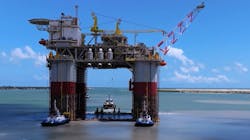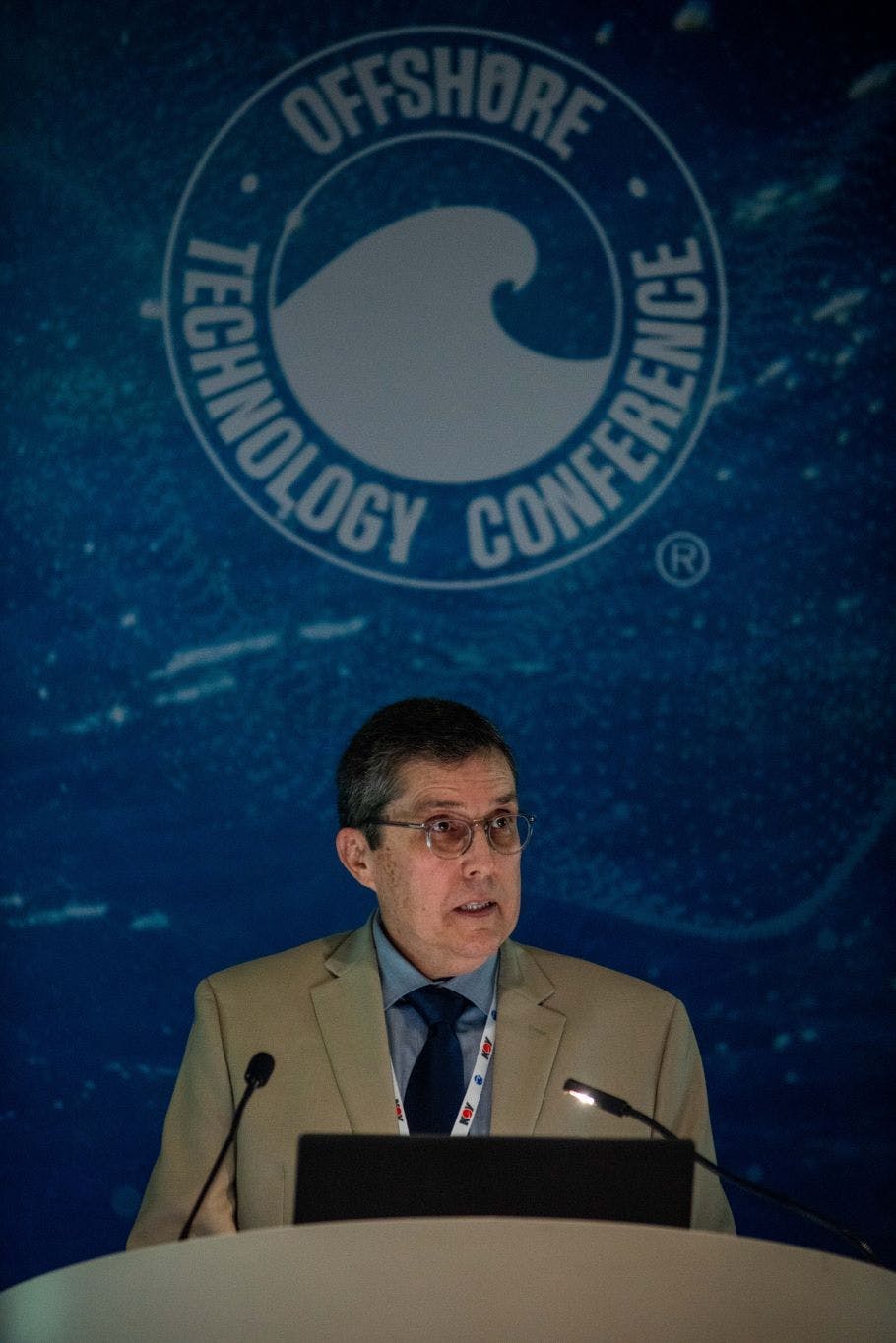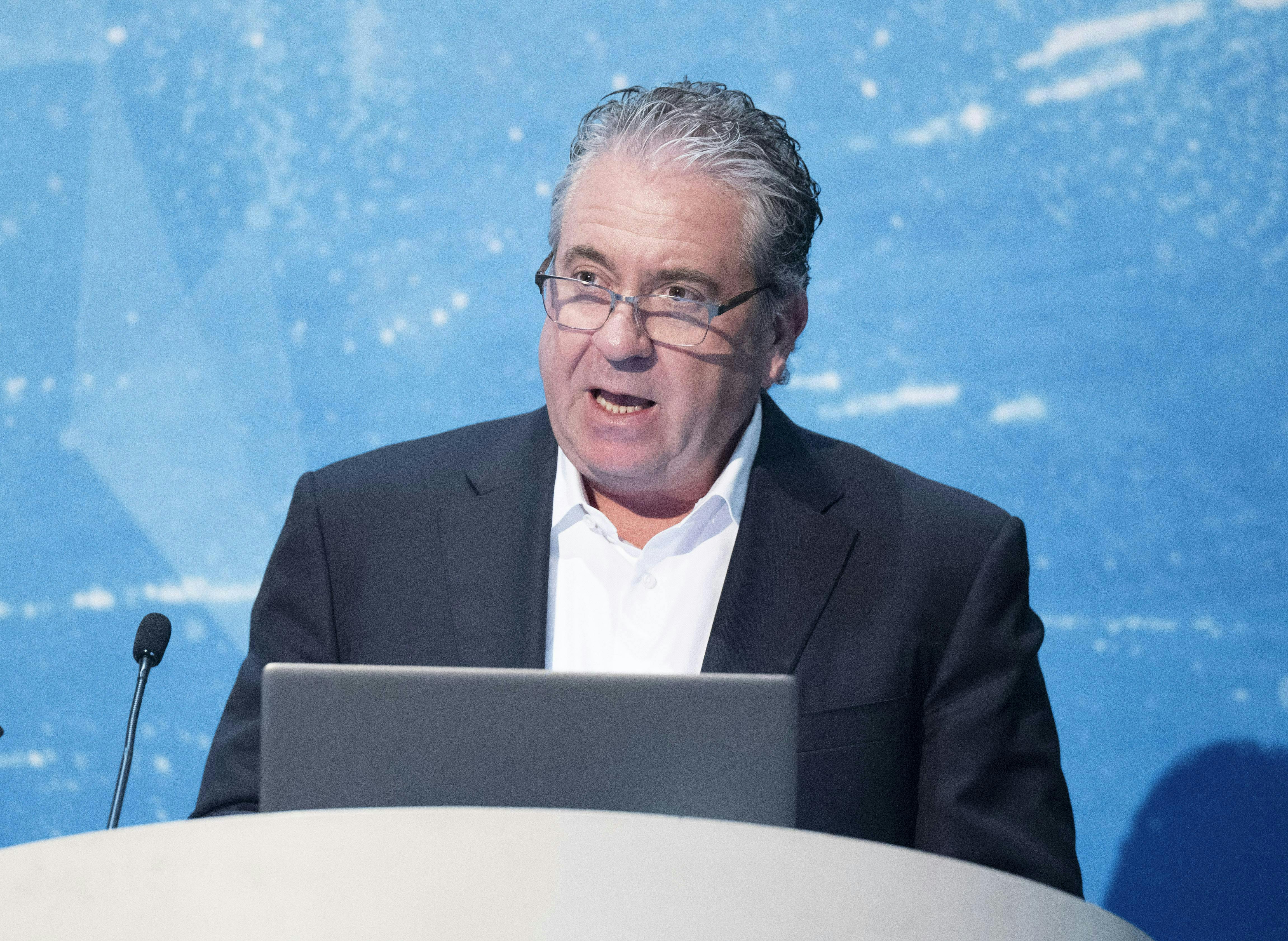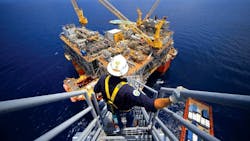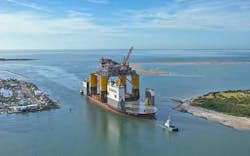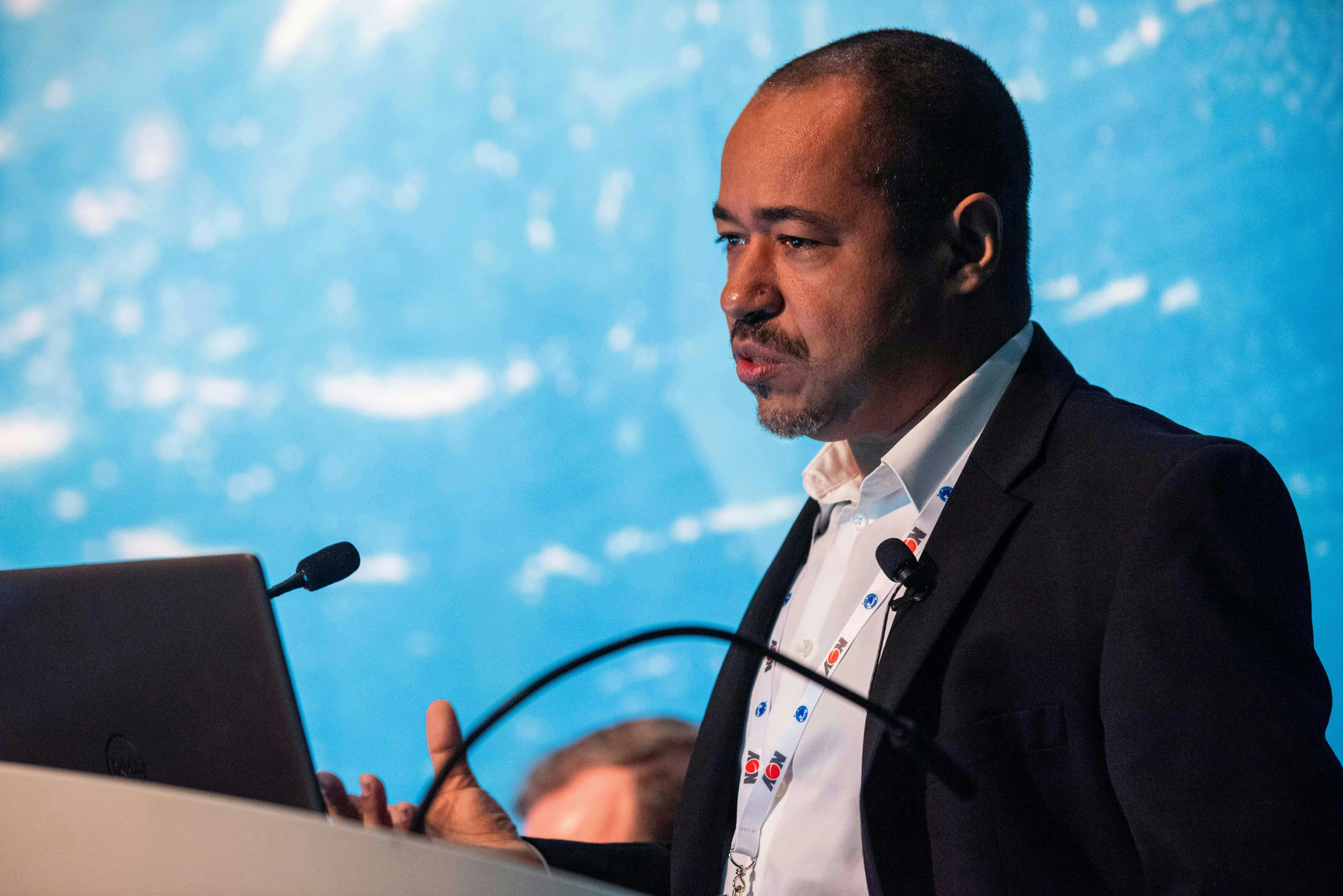OTC 2024: Operators provide updates on their Gulf of Mexico E&P campaigns
Editor's note: This feature first appeared in the May-June 2024 issue of Offshore magazine. Click here to view the full issue.
By Bruce Beaubouef, Managing Editor
The major integrated operating companies are reaffirming their commitment to E&P efforts in the US Gulf of Mexico, as evidence by several presentations offered at this year’s Offshore Technology Conference in Houston, Texas.
Over the first three days of the conference, officials from Shell, BP and Chevron described their recent successes and outlined their plans for the near and long term in the deepwater Gulf.
These officials shared insights into their development strategies and offered lessons learned in their campaigns to maximize capital efficiency, protect worker and environmental safety, and unlock the challenges of drilling and producing the Gulf’s new frontier – high-pressure, high-temperature reservoirs. The excerpts below are taken from live reporting at the first three days of the conference.
Chevron’s Anchor breakthroughs
In 2019, Chevron’s Anchor project was the industry’s first high-pressure (>15,000 psi) deepwater development to achieve Final Investment Decision (FID).
On the first day of OTC in Houston, Tim Mitchell, Anchor Project Director, Chevron, provided an update on the project so far, and shared lessons learned and best practices that helped project teams successfully plan and execute this milestone project in the Gulf of Mexico.
Mitchell noted that to develop the high-pressure reservoir, Chevron had to undertake a “world class” technology development and qualification program to deliver various 20K drilling, completion, intervention, subsea and production technologies. The 20K technology development program required significant investment by the Anchor co-owners, Chevron and TotalEnergies, with participation by multiple industry-leading contractors and suppliers.
One key decision, said Mitchell, was Chevron’s decision to enter into an $831-million contract with Transocean for the design, construction, and five-year operating terms for the Deepwater Titan drilling rig, a decision that was “made a full year before our final investment decision.” The award of this contract, he added, “was a huge step forward for Chevron to develop the Anchor asset,” and move the project forward. “In retrospect, it was a real leap of faith,” he said. Following that decision, Chevron began working with SLB OneSubsea to develop some of the key subsea components of the project.
Upon the completion of FEED activities, Chevron announced that it had reached FID on the $5.7-billion project in late 2019, with Phase 1 consisting of a seven-well subsea development plan and a semisubmersible floating production unit capable of handling pressures up to 20,000 psi.
And then just a few months later, the industry was hit with the COVID-19 pandemic, a downturn in commodity prices, industry consolidation and severe supply chain constraints. “Of course, the impacts of the pandemic were far reaching for us all,” Mitchell said. “All of us had to dig deep to keep moving forward, and it was a testament to everyone involved on the Anchor project to continue forward in the face of so much uncertainty.”
The project teams were faced with an “adaptive challenge” to enable the 20k technology under such circumstances – to qualify the equipment, obtain regulatory approvals, and move the technology forward from prototype to production within “a cost and schedule that would deliver our overall business objectives.” A key example of rising to meet the “adaptive challenge” was the development of a timeline and framework that ensured consistent delivery of “high-quality deliverables,” which in turn enabled the project to consistently move forward.
Mitchell said that there were five key operating principles that kept the project on schedule. The first was to develop and deliver a safe project enabling 20k technology. “Without 20k, we didn't have a project,” Mitchell said. The second was “to embrace operational excellence in what we deliver, and to protect our people.” The third was to “preserve the environment, which is a core part of who we are and what we do, and gives us our license to operate.” The fourth was to “develop a passion to continuously innovate and to simplify” processes and procedures; and the fifth was “empower the team to collaborate to deliver a project that meets our financial and economic objectives.”
To date, the Anchor project team has drilled two wells, and is now in the process of completing one of these, Mitchell said. The semisubmersible floating platform, oil and gas pipelines, and much of the subsea architecture is in place.
Mitchell also noted that the project has had 13 million man-hours to date without injury to crew and workers. He added that the project is “on trend” to be commissioned within FID cost parameters and is on schedule to meet its online target date within this year.
BP’s Paleogene strategy
Oil and gas production from the deepwater Gulf of Mexico will remain a key component of BP’s overall energy portfolio, even as it invests in the energy transition, according to Andy Krieger, Senior Vice President—Gulf of Mexico and Canada for BP.
“We’re going to invest in today’s oil and gas systems, and we will pragmatically invest in the energy transition. But we’re going to do so as a simpler, more focused, and a higher value company.” Krieger said that a key goal will be to move toward the production of 400,000 barrels per day of oil equivalent, “and the Gulf of Mexico will be at the front and center” of this strategy, he said.
“We are one of the region’s largest oil producers, and we will continue investment and exploration around five operated hubs: Atlantis, Mad Dog, Na Kika, Thunder Horse and Argos.”
“The Paleogene will drive the growth agenda in the Gulf of Mexico with new hub developments” and he noted that BP has significant discovered reserves in this play with its Kaskida, Tiber, and Guadalupe discoveries.
Krieger noted that its Argos platform began operations last year, “and this facility will strengthen our position for years to come.” The Argos semisubmersible floating production platform is the key component of the company’s recently commissioned $9-billion Mad Dog 2 project. “It’s one of our most advanced facilities deploying some of the latest technology.”
A key part of BP’s strategy in the Gulf will be to “maximize value around existing hubs,” and this will be achieved through a variety of new subsurface analytical techniques, well cost reduction measures, and enhanced recovery technologies.
“New seismic data reprocessing techniques have allowed us to build the right well, at the right time, in the right place.” Krieger noted that with 4D seismic technology, engineers can now see changes in both pressure and water movement through the course of time, and this type of analysis is “fundamental to improving capital efficiency. We can now produce injectors where they're needed, and better pinpoint the location of producers.”
He also noted that by working with its suppliers, BP has been able to improve its light well intervention capability to enhance well production, while at the same time achieving a 50% reduction in intervention costs in many cases.
“Another key is accessing all the reserves that we potentially can access,” and here BP is using horizontal well technology and may employ multilateral technology in the future. Also important is the use of the latest well completion designs – not only the traditional open gravel packs but also “potentially standalone screens in the future.” And BP is also using the latest facilities technology, such as low salinity water injection and subsea pumping. The company’s propriety LoSal enhanced oil recovery – a low salinity water injection system – will be deployed on the Argos platform, inaugurating its first use in the Gulf of Mexico.
Another key component of maximizing value around existing hubs will be infrastructure-led exploration, an approach which will enable new fields to be brought in through “fast-paced tiebacks” to existing production platforms. These types of reserves can be “brought online in a very timely manner with incredibly high rates of return,” he observed.
Krieger then returned to the topic of E&P in the Paleogene, “which will lead our growth through the end of the decade with new field developments.” He noted that BP currently has more than nine billion barrels of discovered resource in place in the Paleogene across five discoveries, with a potential to deliver 150,000 barrels per day by the early 2030s. “That’s nine billion barrels of discovered resource in place, it's already been penetrated, and doesn’t require further exploration.”
BP’s Kaskida and Tiber prospects, both undergoing studies and conceptual design reviews, are the most important near-term Gulf of Mexico field development projects that feature Paleogene reserves. And for these high-pressure, high-temperature fields, the successful development of 20k technology was crucial, including improved hoisting capacity on drilling rigs, improved BOPs and well control technologies, and high-pressure subsea trees. All of this, and the use of ocean-bottom node seismic data, “gave us further confidence to proceed with these projects.” An FID is expected on Kaskida this year, and an FID is expected on Tiber in 2025.
The development of 20k technology “has been an interesting process to watch,” Krieger observed. “There has been a natural progression.” He noted that BP had achieved the 15k metric with its Thunder Horse facility in 2008, “and now the industry has achieved 20k, a natural progression and a demonstration of the innovation and the drive that our industry has.”
Krieger also noted that completion technology will be vital to successful Paleogene developments. With the use of multi-stage fracturing systems, “we have the ability to get initial production rates and individual well recoveries as high as those we have seen in the Miocene.”
With regard to FPUs and topsides technologies, Krieger noted that BP will likely follow the “design one, build many” model that other operators have advanced in recent years. “Topsides have typically been an expensive part of the field development,” Krieger said. But now, “bespoke topsides are a thing of the past. Going forward, FPUs will be smaller, simpler, and require fewer people.”
Krieger also noted BP’s “robust leasing strategy” in the Gulf of Mexico, noting that the company had more than 275 leases in the Gulf. And over the last 18 months, it has extended its lease position in the Paleogene. “We have a tremendous amount of running room” in the Gulf, Krieger observed. “The Gulf of Mexico will remain an enduring basin for BP, and we’re just getting started.”
Shell’s replication strategy
While oil prices have rebounded significantly since their nadir in March 2020, operators have taken the lessons of capital efficiency to heart. Shell is arguably at the forefront of implementing this engineering philosophy with its “design one, build many” approach that it has followed with its Vito and Whale production platforms, and with its upcoming Sparta platform.
The benefits and the lessons learned from this approach were presented and discussed by Shell and Seatrium officials at the panel “Mega Project: Whale Deepwater Host Replication” held at OTC 2024 on Wednesday morning.
Panel participants included Jonathan Johnson, Business Opportunity Manager–Shell Exploration; Oro Awaritefe, Project Manager–Shell; Jason Gage, Host Manager–Shell; and William Gu, Executive Vice President with Seatrium.
“After the Whale discovery, we looked at a broad spectrum of FPU options,” said Johnson, “including FPSOs, Spars, and TLPs, but none of these designs fit our needs.” Metocean conditions, among other things, argued against these deepwater platform designs. Nor would a subsea tieback suffice – “the reserve volumes are just too big.” But the Vito semisubmersible had just gone through a significant engineering redesign, “and we recognized that with this design, we could develop Whale quickly.”
At the time of Vito’s redesign and Whale’s planning, oil prices had improved to $50 per barrel, but Shell officials still wanted to move forward rapidly, but with caution and deliberation. The new operating principles were “speed, simplicity and faster cycle times,” Johnson said. Soon, “replication” became a key design parameter when designing new field architectures. In today’s environment, “we want faster, safer and simpler,” Johnson said.
Originally, Vito had been designed for “maximum recovery” but had to become “leaner and meaner” in the new economic environment, said Awaritefe. That meant that Whale had to become “leaner and meaner” too – as will the upcoming Sparta platform. “We need to remain competitive” in this marketplace, he commented, “and cycle time is a key part of that. There are huge benefits in faster construction time.”
“With Sparta, we’re not just repeating the design with Whale, but also relationships with many of the key vendors, fabricators and suppliers,” Awaritefe noted. “This helps bring certainty in the design.”
Shell officials noted that the Whale FPU is not a 100% replication of Vito – for one thing, “the fluid conditions are different from Vito,” Johnson noted, and this necessitated some differences in processing equipment. Additionally, Whale’s greater distance from shore necessitated a larger helideck, to accommodate larger helicopters. Another difference was in the mooring system, given the considerable difference between Vito’s water depth (about 4,000 feet) and Whale’s water depth (about 8,500 feet).
Awaritefe outlined the benefits of replication. “You are better able to forecast where you're going right from the beginning. There's less time spent in contracting, because you're using supply chain companies that know your specifications, and they know what you’re after. And there are repeat orders. In some cases, you can actually take the purchase orders and just change the project name on the document. We were able to cut down the amount of churn or rework by 75%. These have big impacts in time and money. So, there are great efficiencies available with replication, because there is an ease of execution that comes along with it. You have established relationships. And that human component of the equation, relating across contractual lines, is a key to success.”
Awaritefe noted that these efficiencies brought precise and significant benefits to designing the Whale FPU, with lessons learned from Vito. Engineering time for the hull was reduced by 15 months. Engineering time for the topsides was reduced by 20%.
There are some challenges with replication, Awaritefe conceded. “Sometimes it’s easier said than done. Replication is a skill, a competence.” There is sometimes resistance to change, he admitted. Further, “there is also the possibility of adopting and incorporating errors,” meaning a failure to take in all the needed lessons learned from one project to the other. Being able to retain the needed engineers, workers and crew members can be another challenge. “We have to work and guard against execution complacency, and there is also the potential for ‘stagnation’ of the staff if they perceive themselves as working in one location or in a given position too long.”
Gage noted that Shell had worked with Worley and Seatrium on both Vito and Whale, often co-locating key personnel in the same office space. Many of the equipment suppliers were the same. “So, we were able to identify vendors early, and this helped us ‘kick start’ the project by having the proper equipment, right at the start. There were a lot of lessons learned from Vito that we were able to incorporate into the Whale equipment procurement strategy.”
Gage also noted that there could be some tradeoffs with the replication strategy. Sometimes, changes are needed, he said. “There is a time and place for reasonable, deliberate adaptions and adjustments, where the value is justified.” In his view, replication could be viewed as very similar to a brownfield strategy. “With a brownfield, you don’t ask ‘what do you need?’ You say, ‘this is what you’ve got.’ So, with any proposed design change, you have to be very deliberate, and fully describe the opportunity and value that such a proposed design change would bring.”
And by having a comprehensive digital model of the Vito available, Gage noted that engineers were able to move away from paper drawing deliverables on Whale, which also brought huge workflow efficiencies. “Differences and specific designs could be quickly identified, and everyone had visibility on this process. We had good alignment with Seatrium, and there was ‘one source of truth’ with the fabricator.”
Gage also noted that the replication strategy brought “some early design wins” with the Whale project. “The weight budget turned out to be accurate, and this resulted in additional available deck space. So, we added a wing deck, and we were able to add 1,500 tons of payload onto the platform for very minimal costs, and a huge value add for flexibility.”
“Replication has added tremendous value,” Gage said. “But it still requires considerable attention to detail – not everything is precisely the same. Sometimes there end up being small differences in equipment that need to be accounted for.”
Gu echoed many of these same themes. “Replication means more than just a traditional cookie cutter approach. We always have to remain flexible and adapt and adjust in response to the supply chain.”
But he did note that the replication strategy had brought significant, measurable improvements in the shipyard, including a 95%+ compliance with IOGP regulations; a better than 99% welding success rate; and a better than 99% pressure test pass rate. These metrics were hugely important, he said, “because today’s quality is tomorrow’s safety.”
And there have been additional efficiency gains from Vito to Whale, Gu observed, including a 15% reduction in steel material wastage; a 15% reduction in man-hours; and a rapid three-month timeframe from topsides integration into the hull, to sail-away. “The design one, build many will be the strategy of choice in the future,” Gu observed.
To build on these synergies, Seatrium and Shell Global Solutions International signed a non-binding Memorandum of Understanding in April to collaborate on opportunities for floating production systems.
The MoU, with a focus on project standardization and replication, seeks to promote best practices in design and construction, with both parties expected to apply lessons learned from the Vito and Whale projects, to achieve further benefits of replication.
Currently Seatrium and Shell are working on the engineering and construction of the Sparta semisubmersible platform. Shell issued the FID on the Sparta project last December, and it is expected to be in place and operational by 2028.
The Whale FPU has been installed in Alaminos Canyon block 773 and is currently undergoing the commissioning process.
About the Author
Bruce Beaubouef
Managing Editor
Bruce Beaubouef is Managing Editor for Offshore magazine. In that capacity, he plans and oversees content for the magazine; writes features on technologies and trends for the magazine; writes news updates for the website; creates and moderates topical webinars; and creates videos that focus on offshore oil and gas and renewable energies. Beaubouef has been in the oil and gas trade media for 25 years, starting out as Editor of Hart’s Pipeline Digest in 1998. From there, he went on to serve as Associate Editor for Pipe Line and Gas Industry for Gulf Publishing for four years before rejoining Hart Publications as Editor of PipeLine and Gas Technology in 2003. He joined Offshore magazine as Managing Editor in 2010, at that time owned by PennWell Corp. Beaubouef earned his Ph.D. at the University of Houston in 1997, and his dissertation was published in book form by Texas A&M University Press in September 2007 as The Strategic Petroleum Reserve: U.S. Energy Security and Oil Politics, 1975-2005.
